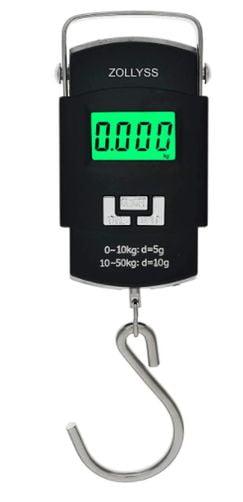WEIGHING SCALE (COST: RS.450/PIECE)
₹450.0
Weighing scale 10-50kg capacity
AA battery operated
Used to weigh input waste and output compost
Color may vary slightly
Affordable Weighing Scale:
Embracing eco-friendly products transforms waste into wealth, fostering sustainability and mitigating environmental impact. Innovative initiatives champion the conversion of discarded materials into valuable resources, paving the way for a circular economy.
To commence this virtuous cycle, recycling emerges as a key player. Plastics, paper, and metals, once destined for landfills, undergo a metamorphosis. These materials are reimagined, reincarnated into new products, reducing the demand for virgin resources and curbing pollution.
Biodegradable alternatives further revolutionize our consumption patterns. Products derived from natural materials seamlessly integrate into the ecosystem, leaving minimal traces. This shift not only reduces the burden on landfill sites but also curtails the persistence of harmful substances in the environment.
In the realm of waste-to-wealth, upcycling emerges as a creative force. Discarded items find a second life, elevated into functional and aesthetically pleasing artifacts. From repurposed furniture to fashionable accessories, upcycling not only minimizes waste but also showcases the beauty of sustainable design.
In the business landscape, companies increasingly adopt a cradle-to-cradle approach. This entails designing products with their end-of-life in mind, ensuring that materials can be easily disassembled and reused. Such practices not only enhance resource efficiency but also cultivate a mindset of responsibility within the industry.
Affordable Weighing Scale: The waste-to-wealth paradigm extends beyond tangible goods to energy production. Biomass, a byproduct of organic waste, becomes a valuable energy source through anaerobic digestion or incineration, contributing to the renewable energy matrix.
In conclusion, the transition to eco-friendly products and the waste-to-wealth philosophy signifies a revolutionary stride towards a sustainable future. By reimagining waste as a valuable resource, society not only mitigates environmental harm but also forges a path toward a regenerative and harmonious relationship with the planet.
You must be logged in to post a review.
Q & A
1. Materials and Manufacturing
Sustainable Materials:
- Recycled Materials: If the weighing scale uses recycled or upcycled materials, this reduces the need for new raw materials and decreases the environmental impact associated with extraction and processing. For example, using recycled plastics or metals can cut down on resource consumption and waste.
- Durable Materials: Using high-quality, durable materials ensures a longer product life, reducing the frequency of replacements and minimizing waste.
Manufacturing Efficiency:
- Energy-Efficient Production: Manufacturing processes that use less energy or renewable energy sources contribute to a lower carbon footprint. For instance, if the production facility uses solar or wind power, this reduces reliance on fossil fuels.
- Lean Manufacturing: Implementing efficient manufacturing practices that minimize waste and energy use can lower the overall carbon footprint of the product.
2. Product Design
Design for Longevity:
- Durability: A well-designed weighing scale that is robust and has a long lifespan can reduce the need for frequent replacements. Products designed to last longer contribute to a lower overall carbon footprint by extending their useful life.
Minimal Packaging:
- Eco-Friendly Packaging: Using minimal and recyclable packaging materials helps reduce waste. For instance, if the weighing scale is packaged using biodegradable or recycled materials, this reduces the environmental impact associated with packaging.
3. Operational Efficiency
Low Power Consumption:
- Energy-Efficient Components: If the weighing scale uses energy-efficient components, such as low-power displays or sensors, it consumes less electricity during operation. This is especially relevant for battery-operated scales where energy efficiency can significantly impact the carbon footprint over the product’s lifetime.
Battery Disposal and Recycling:
- Rechargeable Batteries: If the weighing scale uses rechargeable batteries, this can reduce the environmental impact compared to disposable batteries. Additionally, if the product includes a recycling program for batteries, this further reduces its carbon footprint.
4. End-of-Life Management
Recyclability:
- Recycling Programs: Products designed with end-of-life recyclability in mind help ensure that materials are reclaimed and reused, rather than ending up in a landfill. A weighing scale that is easy to disassemble and recycle can have a lower impact at the end of its life cycle.
Scientific References and Justification
Material Efficiency and Recycled Content:
- A study by the Environmental Protection Agency (EPA) highlights the benefits of using recycled materials in reducing the carbon footprint of products (EPA, 2020).
Energy-Efficient Manufacturing:
- Research on energy-efficient manufacturing processes shows that reducing energy consumption during production can significantly lower a product’s carbon footprint (International Energy Agency, 2021).
Product Longevity and Design:
- According to a report by the Ellen MacArthur Foundation, designing products for durability and longevity is key to reducing their environmental impact (Ellen MacArthur Foundation, 2019).
End-of-Life Recycling:
- The Circular Economy literature underscores the importance of designing products for disassembly and recycling to minimize waste and reduce the overall carbon footprint (Circle Economy, 2021).
General Inquiries
There are no inquiries yet.



Reviews
There are no reviews yet.